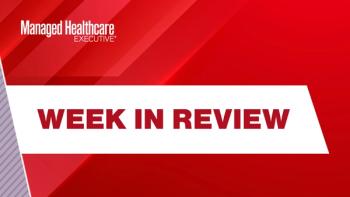
How three hospitals are countering rising drug prices
Rising drug costs are a big problem for all healthcare systems in the U.S. Here’s how three hospitals are addressing the problem.
Rising drug costs are a big problem at St. Louis, Missouri-based Ascension, the largest nonprofit health system in the United States. Despite efforts to monitor the drugs used by the health system, the cost of many older generic drugs has increased by as much as 10.5% in the last year, says Roy Guharoy, PharmD, vice president and chief pharmacy officer for The Resource Group at Ascension. This cost increase, which only includes older generics, cost the health system as much as $70 million between May 2015 and May 2016.
These and other drug price increases are untenable, especially in the midst of the transition from fee-for-service to value-based care, he says. And it’s particularly challenging, given that Ascension is a faith-based healthcare organization that provided approximately $1.8 billion in charity care in 2015.
GuharoyAscension monitors price changes in as close to real time as possible, so that leadership can take immediate action, such as switching to generic drugs or another drug at a better price, says Guharoy. Integral to this process is having physician leaders and specialists in the field review the literature to look at the efficacy of certain drugs to determine their appropriate usage for Ascension’s patients.
Once a particular drug is approved for use across the health system, physicians have 90 days to implement the medication change. Ascension then tracks the implementation at each hospital.
One of the drugs involved in Ascension’s work is a cardiac drug, which increased in price by 1,000%, says Guharoy. This work involved eliminating the drug from crash carts throughout Ascension’s facilities. In cases when the drug must be used, clinicians minimize waste by getting multiple doses from each vial, says Guharoy.
As a result of Ascension’s approach, the health system has saved approximately $1.5 million dollars.
Guharoy says it’s relatively easy to convince doctors of a medication change when you present them with the evidence to back up the change and the reality that the health system can’t continue to provide charity care at current levels if it doesn’t monitor the cost of drugs and make changes accordingly.
The science is there to support these prescribing decisions, it’s just a new way of practicing medicine, he says. “These decisions should be based on science and on delivering the most effective, high-quality and cost-effective care.”
EHRs drive smart decision-making
Forslev“It’s very difficult to manage drug costs when you’re seeing double-digit price increases on a monthly basis,” says Bill Forslev, PharmD, system vice president of pharmacy services at Advocate Health Care, the largest health system in Illinois. “It puts a burden on our healthcare system, our patients, and our payers.”
To hold back the tide of rising drug prices, the faith-based, nonprofit health system has focused on a collaborative approach similar to Ascension’s, where physicians across the system contribute to a system-wide interdisciplinary committee to develop and implement evidence-based decisions about the drugs used to treat patients. Feedback from physicians is valuable because it ensures drug choices are based on evidence and outcomes for patients, says Rishi Sikka, MD, senior vice president of clinical operations at Advocate Health Care. An additional benefit of including the voices of physicians is the initiative doesn’t have the feel of a “top-down approach,” he adds.
For example, the health system has restricted nitroprusside, a vasodilator, in favor of more clinically acceptable infusions for cardiac patients, and this has resulted in a substantial decrease in drug acquisition costs, says an Advocate Health Care spokesperson. While unable to provide specific numbers, the health system has been able to hold down the rate of inflationary increase in drug costs below national projections, as a result of these and other efforts.
Successful implementation of the interdisciplinary team’s efforts hinges on having the information on appropriate medication use “hard-wired” into the health system’s electronic health record (EHR), says Forslev. “It’s really apparent to physicians and pharmacists and everybody that this is the new protocol that we’re going to use, and we have found that to be very valuable in directing us toward the most appropriate drugs for our health system and our patients.”
If a drug is taken out of the health system’s protocols, it won’t automatically show up as an option when the physician is in the EHR, says Forslev, who notes that physicians can still order non-protocol drugs. The word “restricted” is noted within the EHR for drugs that are outside protocol, and there are pop-ups that illustrate the appropriate criteria for usage of that drug if a physician tries to order it. He likens the experience to when a physician tries to order an antibiotic, even though a patient has a viral infection that can’t be treated by antibiotics.
SikkaThe health system’s collaborative approach is key to compliance with the drug protocols in the long- and short-term, says Sikka, and the rationale behind these decisions is communicated to physicians across the system. “That’s really important, because if all you see in the EHR is [that a drug isn’t available], that may engender compliance in the short term, but it certainly won’t engender partnership and compliance in the long term.”
Real-time knowledge of the availability of drugs also helps support Advocate Health Care’s work on countering rising drug prices, since it can translate to better volume discounts. The health system uses a central repository to house all of its prescription drugs; and there are smaller versions of this central repository at each of the health system’s more than 400 sites of care, which include 12-acute care hospitals.
While Sikka notes that provider organizations once relied on shaking a pill bottle to estimate the number of pills inside, he says Advocate Health Care now has access to all of this information digitally at its central repository, and this will soon be the case at the various hospitals that make up the entire healthcare network. The hospitals typically order required drugs from the central repository each afternoon, and they are delivered to each facility, most of which are within an hour’s drive.
Focus on the patient
BerensenSalt Lake City-based Intermountain Healthcare saw an 11% increase in drug costs in 2014 and a 14% increase in costs in 2015, says Nannette Berensen, assistant vice president of pharmacy services, who notes that prescription medications are the single fastest growing expense at the health system. Specialty drugs, in particular, are increasing at a rate of 20% each year. While specialty drugs are used by fewer than 2% of patients, they account for about one-third of the dollars spent on prescription medications, she adds.
With the skyrocketing cost of medications, Intermountain Healthcare, which is unable to provide specifics on its cost savings as of press time, has focused its efforts on working closely with SelectHealth, its insurance entity, to align and share best practices with respect to utilization. Berensen also calls out work with the health system’s supply chain team on sourcing and contracting initiatives, in addition to evidence-based best practices, a disciplined approach to formulary management, waste elimination, and exploring different payment models with pharmaceutical manufacturers to discover innovative solutions to addressing affordability.
Berensen’s advice for any healthcare organization that wants to focus on reducing drug costs is to focus squarely on patients. “Everything that can be done to ensure that patients understand why they are taking medications and how to take them as the prescriber intended should be done,” she says. Healthcare leaders should also keep in mind that when patient cost sharing goes up, medication adherence goes down and that can lead to poorer health outcomes, she adds. Thus, she recommends that healthcare leaders take a robust approach to patient financial assistance.
Aine Cryts is a writer based in Boston.
Newsletter
Get the latest industry news, event updates, and more from Managed healthcare Executive.





















































